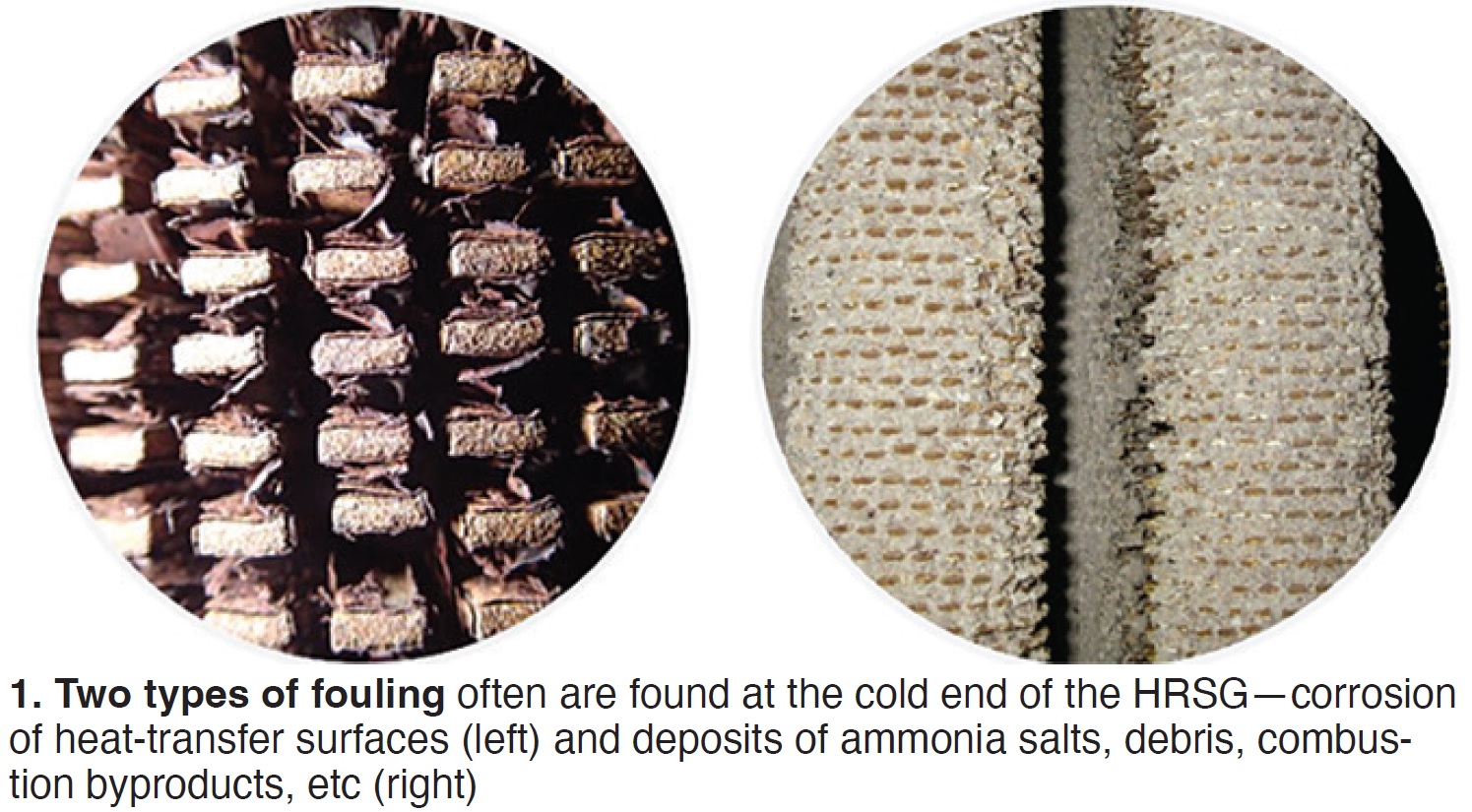
Sponsored content from Bang&Clean Technologies AG and GE Gas Power
By Marc Keusch, John Weimar, and Kenneth Hutchison
As grid dynamics evolve, plant efficiency and fuel costs have become increasingly important for combined-cycle asset owners. Operators are requesting low-cost support to achieve incremental gains in performance of their assets to ensure they can continue running profitably with as minimal impact to other maintenance work as possible.
User challenges. On the gas side of finned tubes, two types of fouling often are observed in the cold end of the HRSG: corrosion and deposits (Fig 1).
Corrosion occurs when water and carbon steel interact, causing oxidation. Spallation of the material on the tubes (rust) leads to reduced surface area, impacting HRSG heat-transfer efficiency and potentially causing reliability issues (leakages).
Different types of deposits can accumulate on the finned tubes—typically these:
- Ammonia salts downstream of the SCR.
- Sulfur deposits if fuel has high sulfur content (natural gas or oil).
- Debris from insulation damage, upstream damage, or broken equipment.
- Combustion byproducts from liquid fuel firing (ash and contaminants).
Fouling penalizes combined-cycle performance in two ways:
- It increases gas-turbine backpressure (Fig 2). Recall that the HRSG is designed aerodynamically in the gas path. Fouling disrupts this flow, increasing the backpressure and slowing the rotation of the gas turbine. Result: Reduced GT power output and increased fuel costs to maintain the same mass flow at lower efficiency.
- It reduces HRSG heat-transfer efficiency, thereby increasing the moisture content of the steam produced and reducing steam-turbine output.
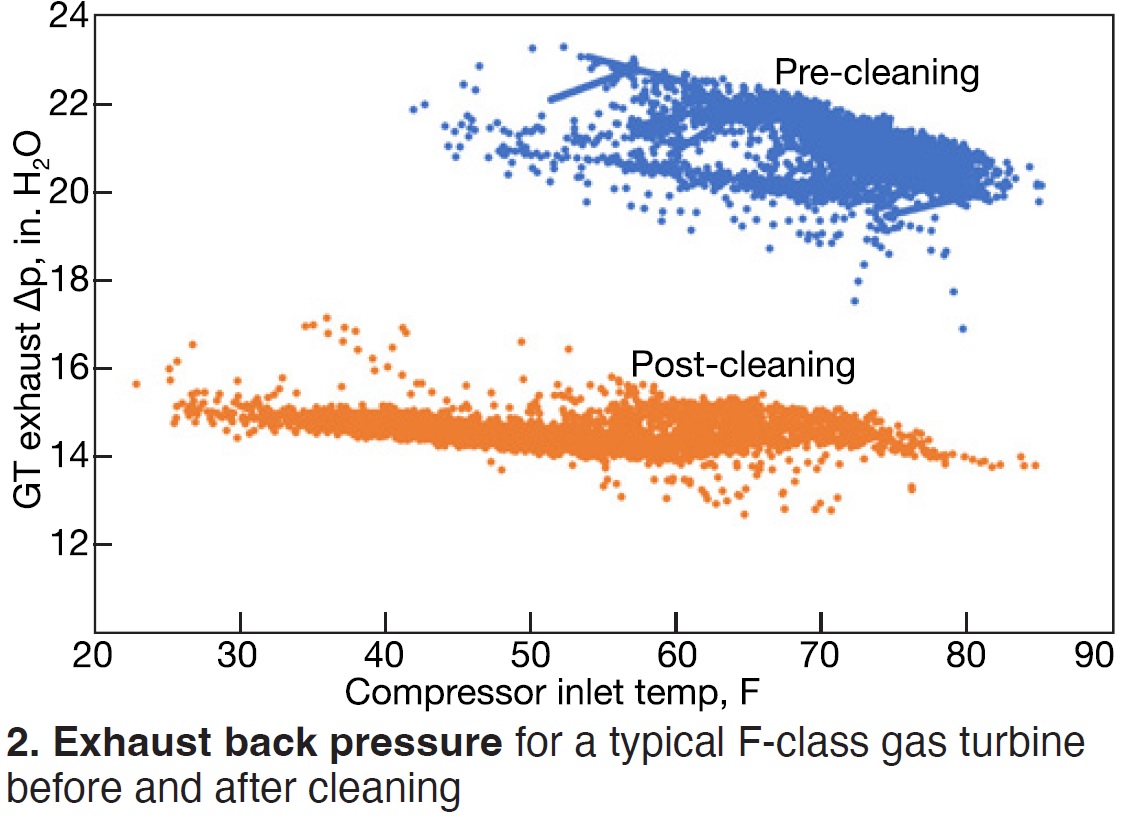
The deep cleaning effect. To remove fouling from HRSGs, a special bag is positioned between HRSG modules via rigging and a flexible lance. The bag is filled with a gas mixture which then is detonated. Combustion of the gases results in a pressure wave that propagates through the tube bundles and dislodges the debris, which then falls to the lower vestibule in dry form. The placement and spacing of the bags prior to the pressure-wave initiation follows a grid-like pattern throughout the equipment. Each cleaning grid is based on the studied pressure drop off over distance, and the degree and composition of fouling.
The standout benefit of PressureWave+ (PW+) is the engineered, deep cleaning of the tube bundles. The PressureWave+ technology, developed by Bang&Clean Technologies in Switzerland, has been in use for over 20 years worldwide and has been applied successfully by GE on more than 375 HRSG cleanings in combined-cycle plants globally. Cleaning significantly reduces fouling made up from corrosion products, sticky salts, corrosive sulfur powders, and incompletely combusted fuel byproducts.
PW+ has proven effective in cleaning tube bundles of 10 or more rows deep while effectively removing fouling from tubes in bundles twice that depth. This includes tubing arrangements that are in alignment or offset and of different designs, as well as those impeded by structural members that could hamper access and cleaning efficiency.
User benefits. PressureWave+ technology provides plants these benefits:
- Cleaning risks to equipment and personnel mitigated through engineered technology.
- Safe continued work on the turbine and to the outside the HRSG during the cleaning.
- Deep cleaning in areas that cannot be reached by conventional technologies.
- Two to seven times more debris removed than with conventional methods.
- Cleaning done in 25-50% of onsite cycle compared with conventional methods.
- Faster cleaning following plant shutdown (even before HRSG is completely cooled).
- No water, no chemicals used on the tubing, thereby reducing corrosion potential.
- No scaffolding needed.
- Fast mobilization.
HRSG structural integrity. Many customers have asked if the PressureWave+ cleaning process is safe for the mechanical integrity of aging pressure parts. Multiple studies describe and systematically confirm safety and effectiveness.
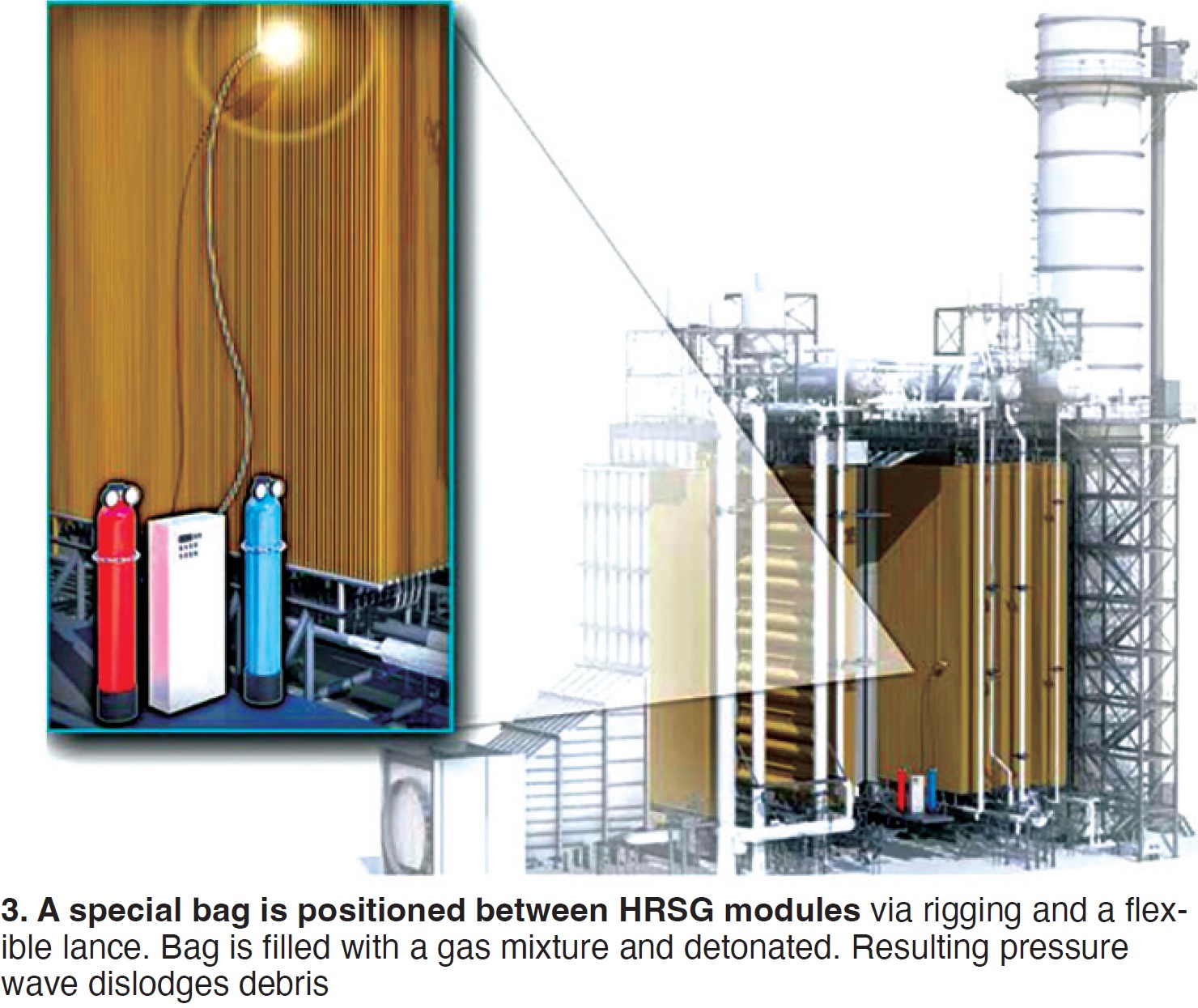
First, effective cleaning deep into the bundles is possible without manual handling or high explosives. User-funded research institutes, Bang&Clean, and GE collaborated on data collection and analysis to define the results observed during outages. Fig 3 shows how the pressure waves interact with the tubing to clean deep into the bundles. This demonstrates the observed cleaning of tubes shielded directly from the PW+ tooling.
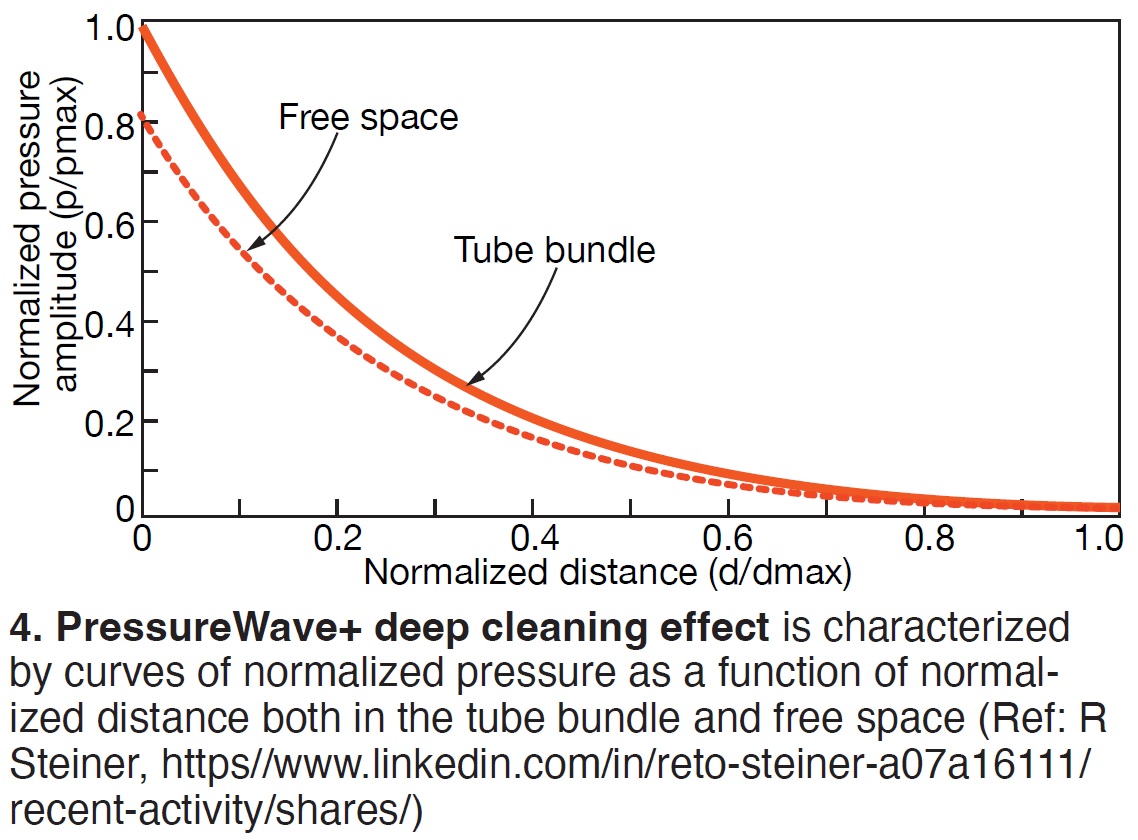
When comparing the pressure amplitude in the free space with that in the tube bundle, the amplitude within the bundle is higher. This amplification within the bundles is attributed to the interaction of the pressure wave shock front reflecting both off the tube walls and itself. This integration of waves (mach reflections) allows for removal of the debris that has built up on the back side of the tubing, thus increasing cleaning effectiveness (Fig 4).
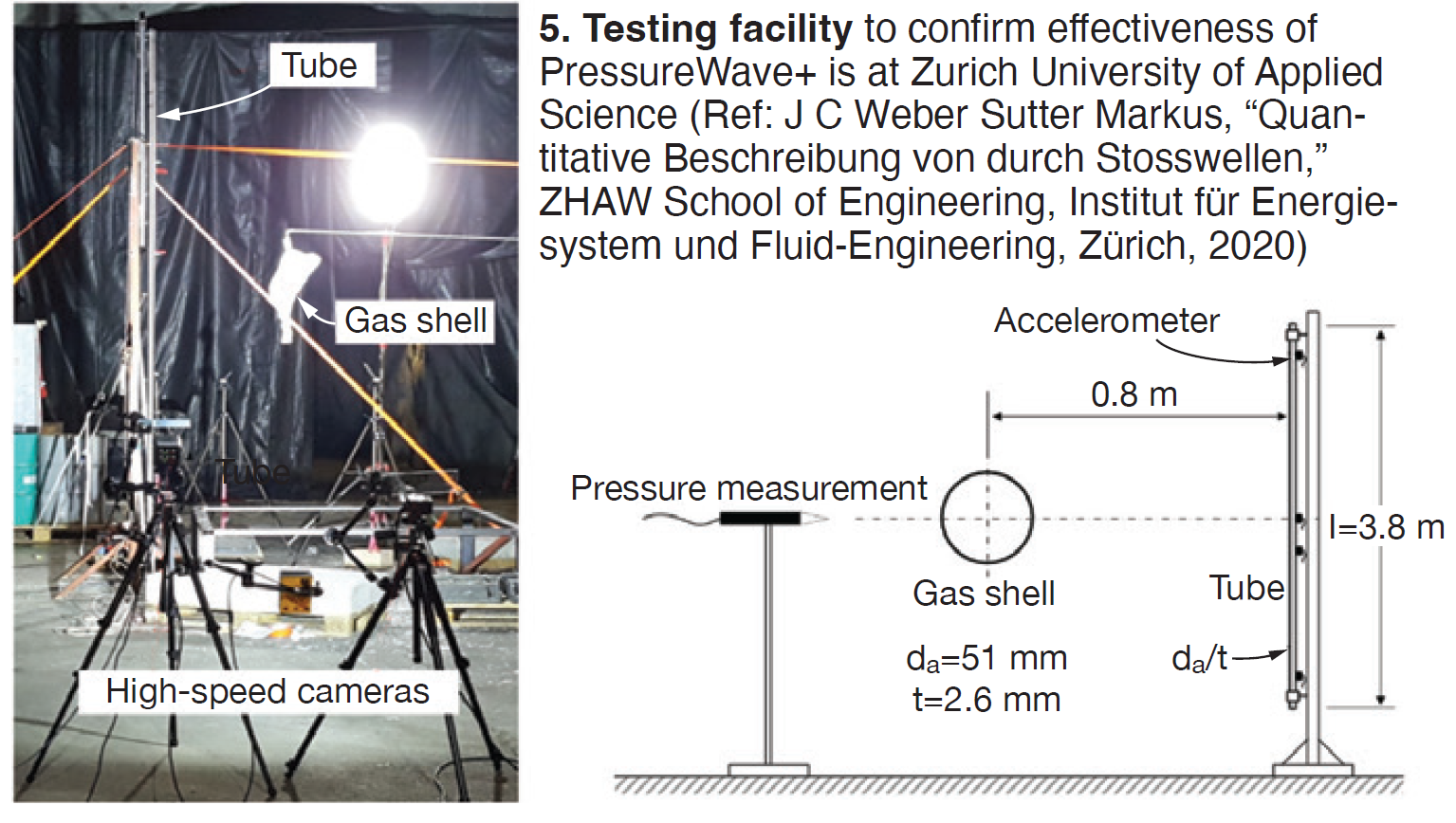
PressureWave+ wave propagation and its strength influence on structures was investigated and validated by simulation (Fig 5). Using existing and new data, numerical stress analyses were completed (Fig 6). The modeling led to this conclusion in the Zurich University of Applied Science review, “In the considered realistic load cases, a permanent deformation due to the detonation can be excluded.”
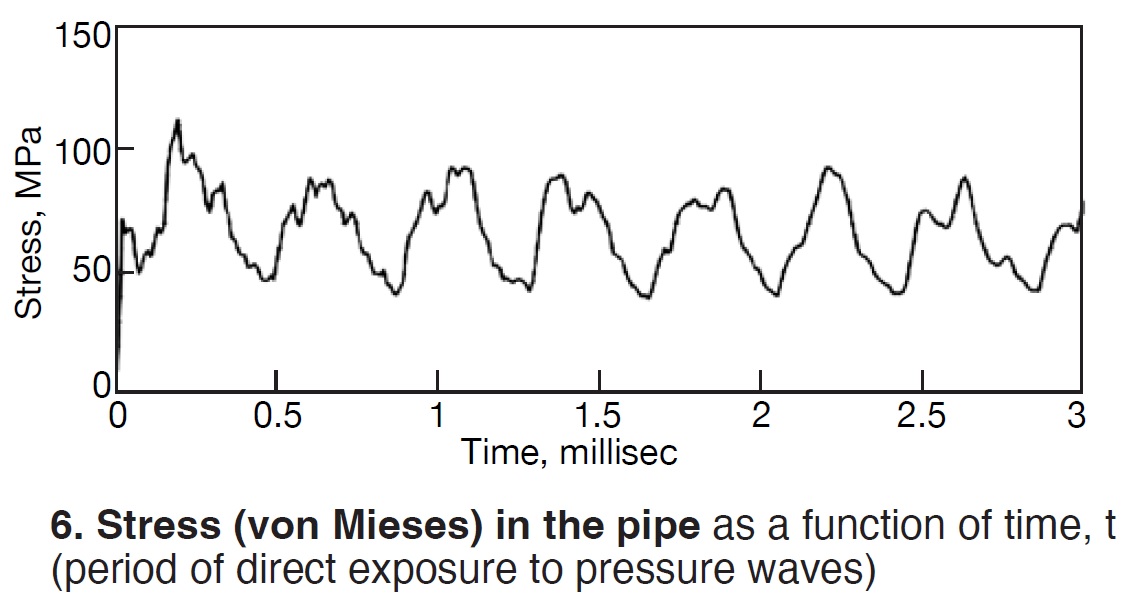
The testing and modeling also detail impact and tube to weld seams experience the greatest stress. This is where the greatest deflection can be observed. It is assumed the resulting harmonic. This harmonic did not result in permanent deformation (Fig 7).
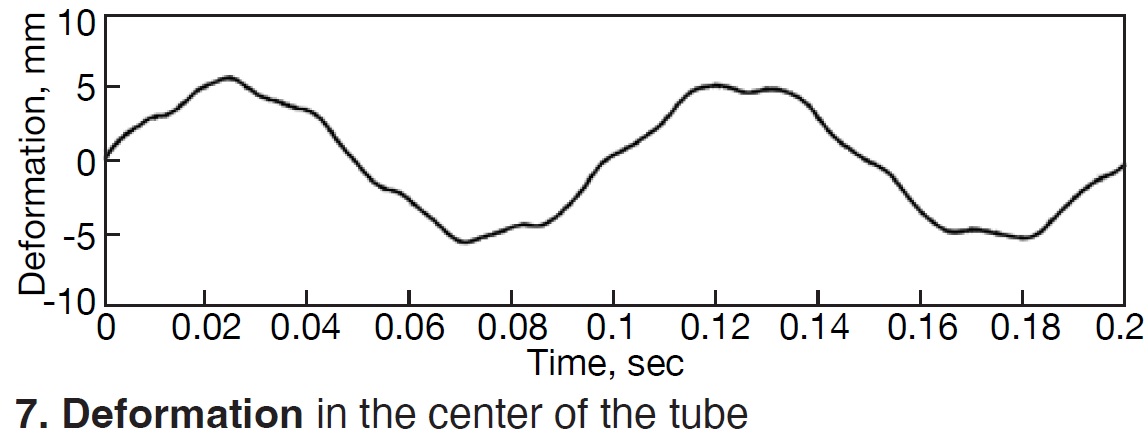
Finally, the PressureWave+ technology was originally designed to clean waste-to-energy boilers during operation. As such, the risk of causing damage to an online unit which would require shutdown was unacceptable and had to be mitigated. Pressure-wave strength and speed are optimized for where effective cleaning is possible, and the risk is mitigated for boiler components. The evidence to support these claims includes the following:
- Scientifically reviewed by the Zurich University of Applied Sciences.
- EPRI review of speed and energy of the pressure wave.
- Over 20,000 successful cleanings of steam generators since 2001.
- More than 375 HRSG cleanings.

